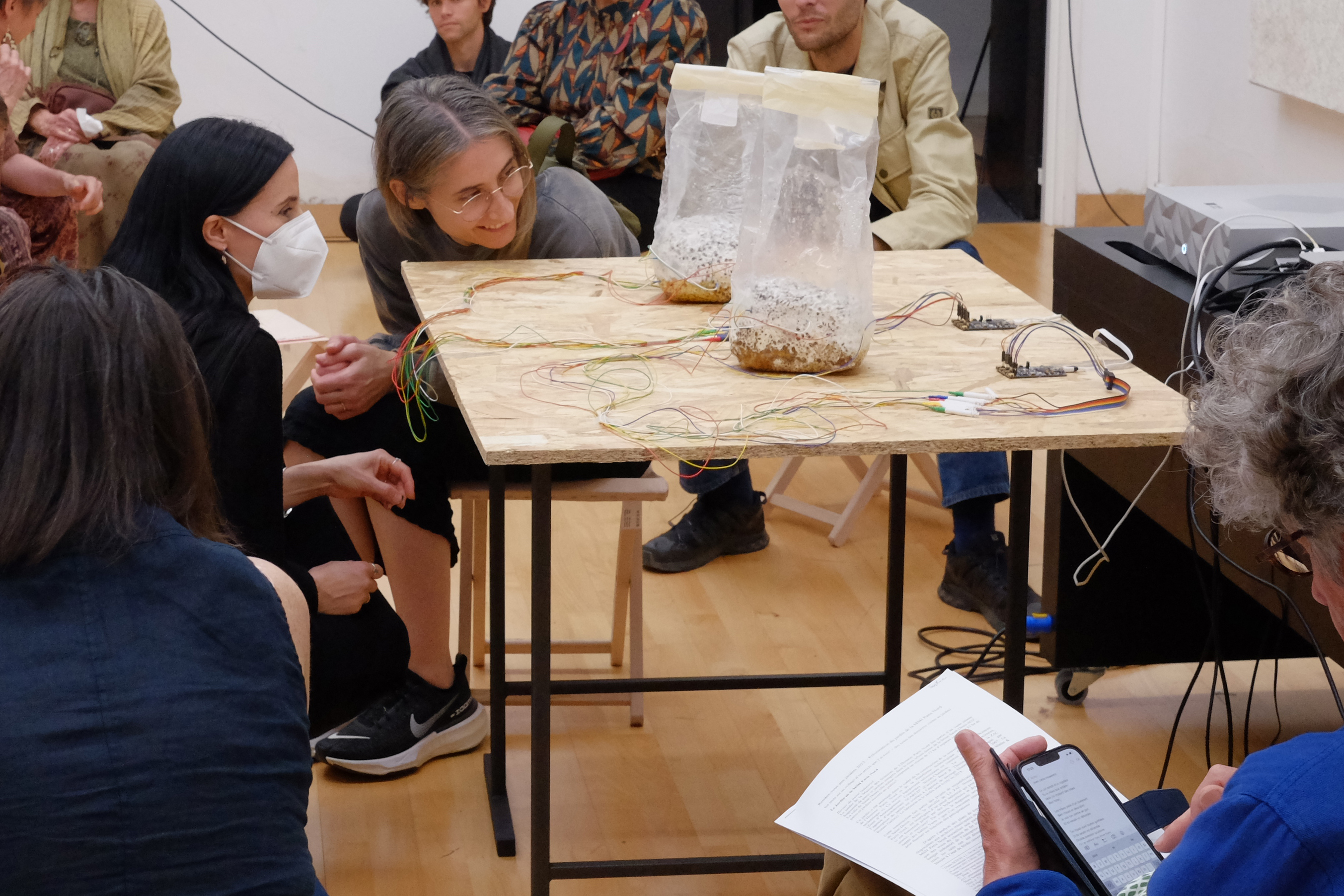
photos (c) Roberto Dell’Orco
Mix Binaural d’une des diffusions de l’installation sonore [à écouter de préférence au casque]:
Plus d’informations scientifiques sur le projet ici: https://mycelium.hypotheses.org/
photo 2023 ©Roberto dell’ Orco
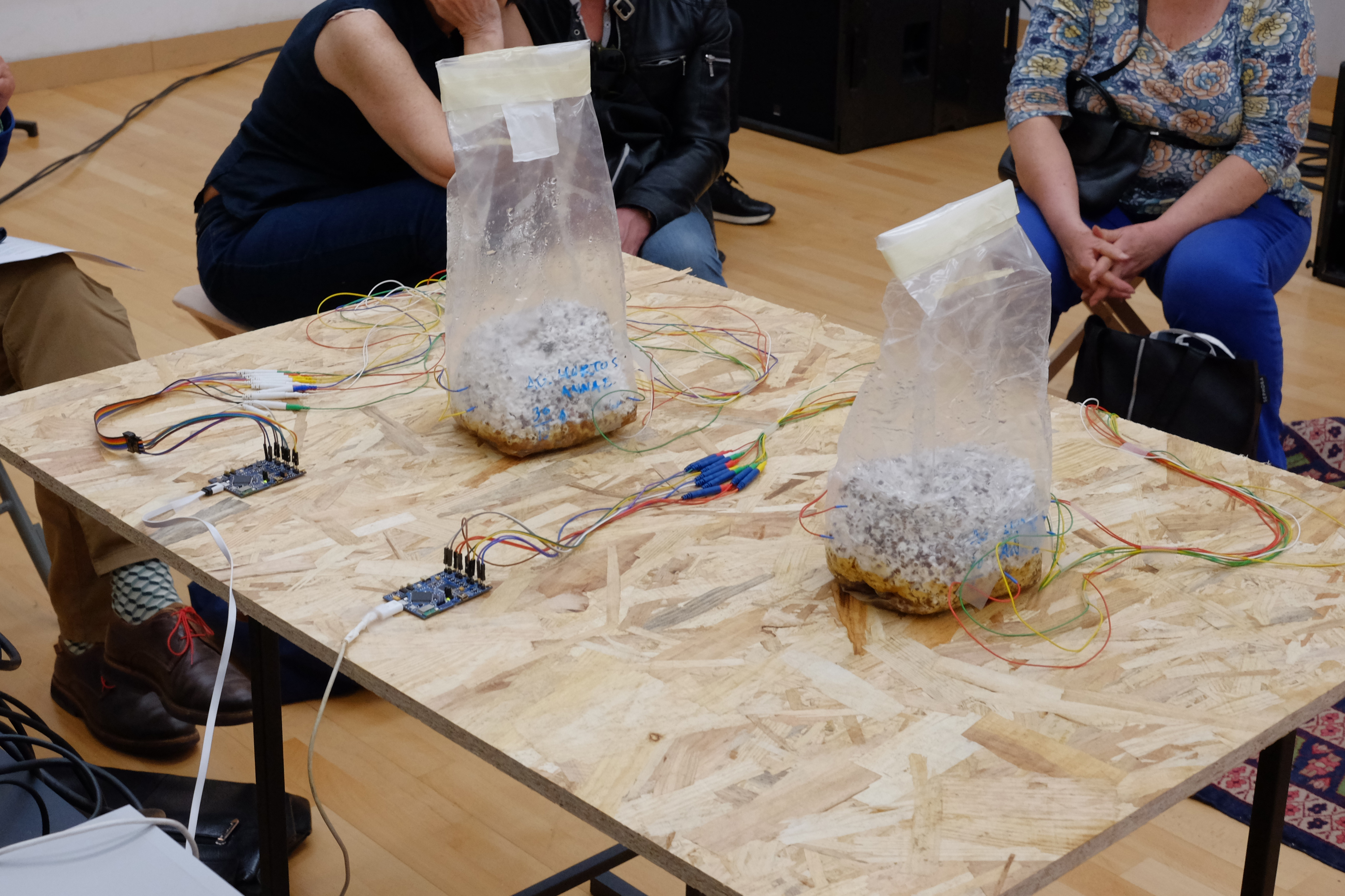
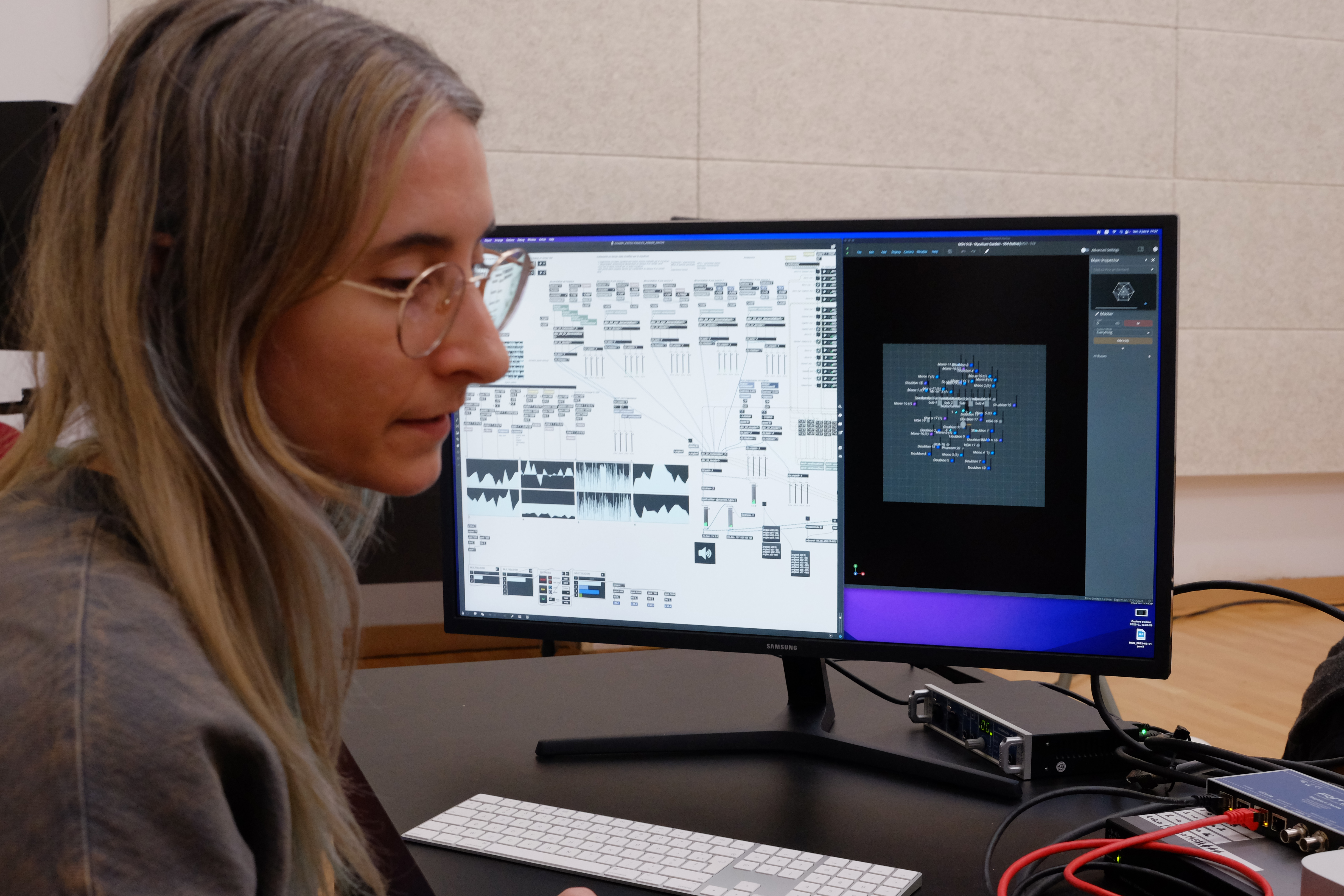
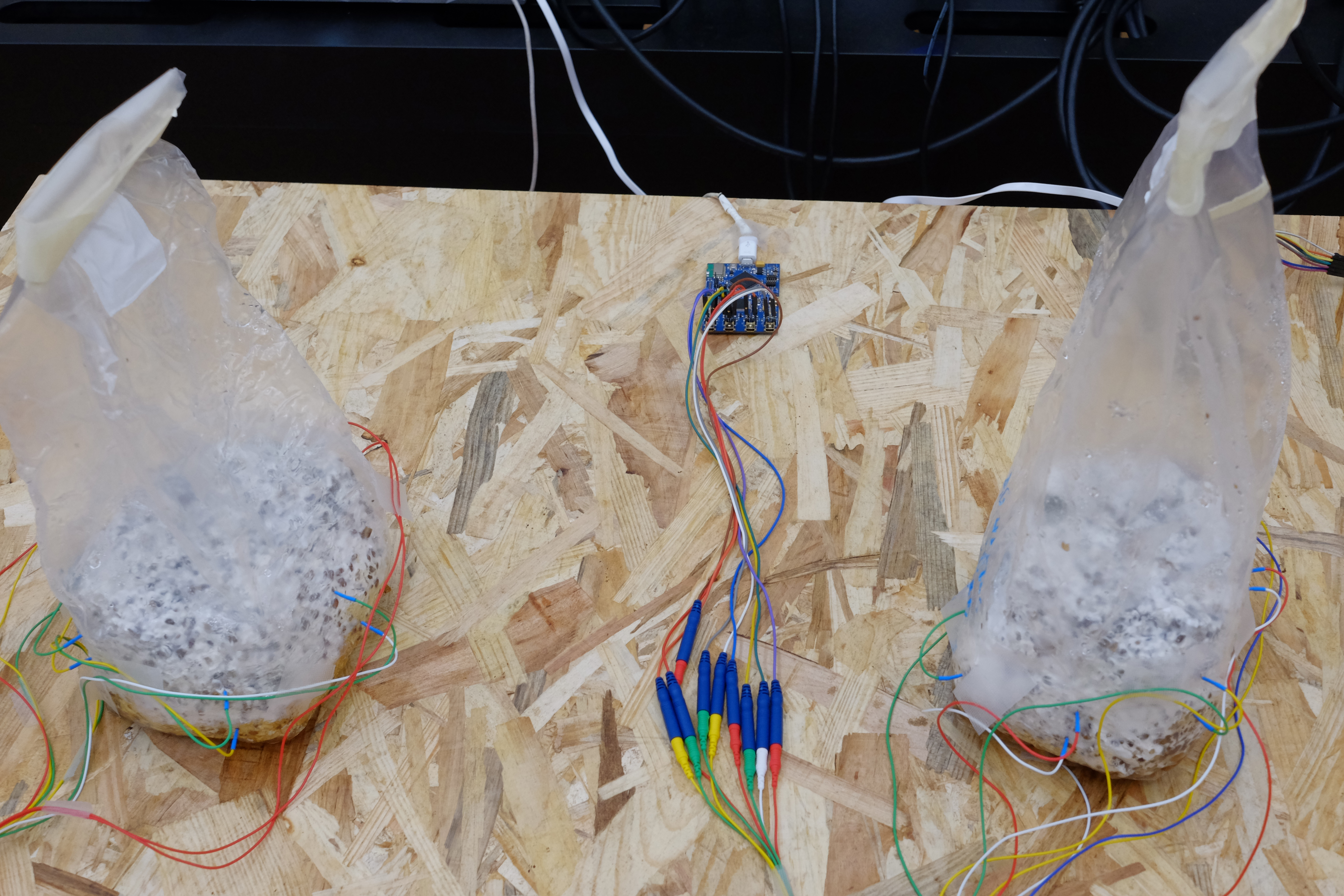
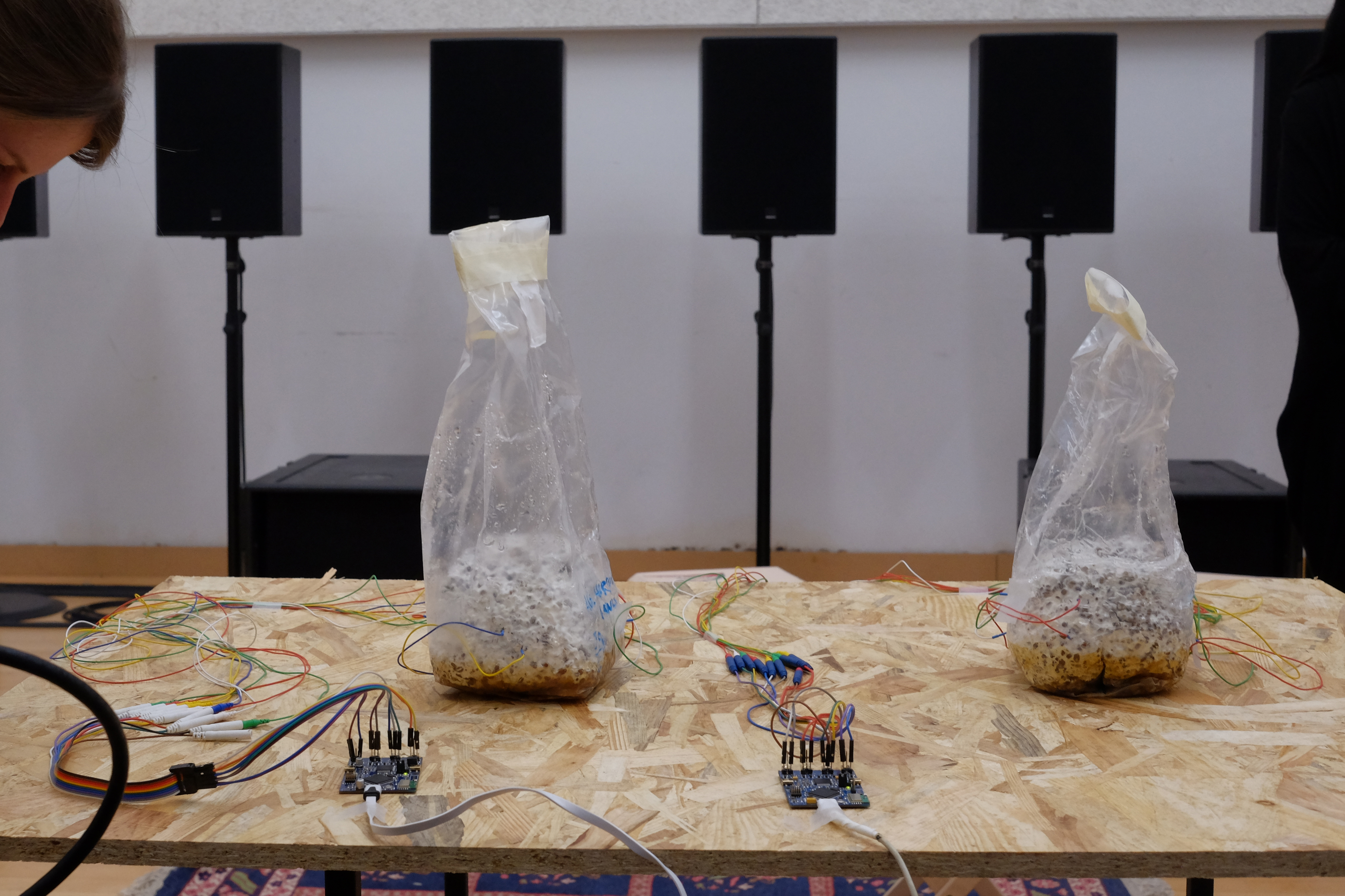
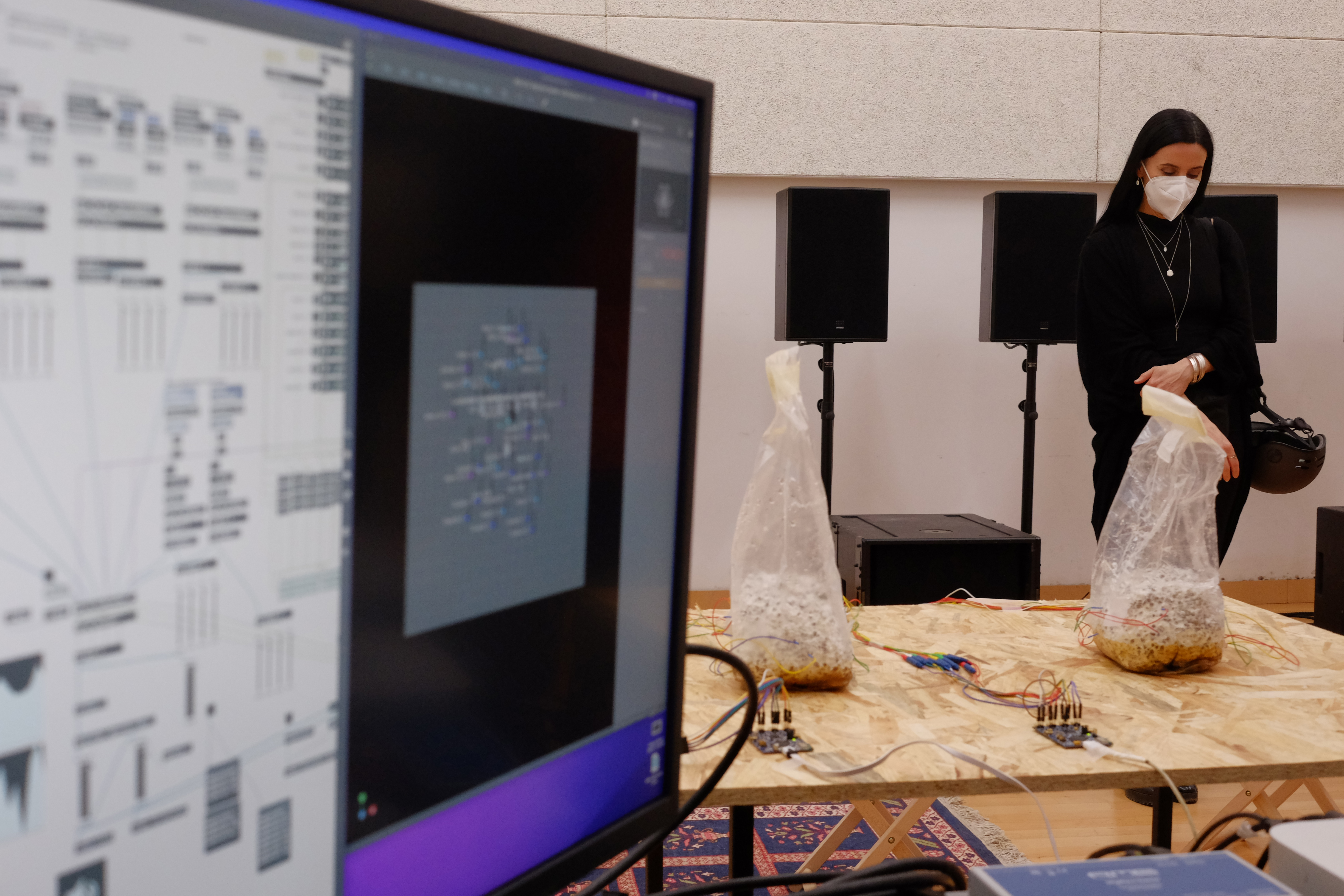
Projet MYCELIUM GARDEN – lauréat de l’appel à projet Symbiose de l’EUR ArTec
Nous construisons un dispositif pour le développement d’interactions sensibles avec le mycélium, organisme qui facilite les symbioses, en passant par une interprétation de la spécificité de ses expressions électriques. Ce projet vise à prendre en compte la singularité d’un réseau de mycélium dans un mode d’interaction avec l’humain qui se base sur l’écoute et l’attention. Ce modèle tentera de garder la dimension de l’altérité dans l’interaction sensorielle.
Nous associerons nos compétences pour développer un modèle d’IA qui nous permettra de cartographier le comportement du mycélium et de co-composer des sons grâce aux variations électriques enregistrées et classifiées. Ces données seront mises en relation avec des données graphiques, textuelles et sonores, pour générer les modes de communication du mycélium. Ce processus expérimental nous permettra d’entrer en relation avec un organisme non humain, d’observer son comportement et d’ajuster notre comportement en interaction avec lui. Nous questionnerons ainsi les notions d’intelligence et d’adaptation dans une processus de composition à trois agents, humain/AI/Mycélium. Quel serait l’intelligence du mycélium comparée à celle du musicien humain et de l’intelligence artificielle : qu’entendons-nous par- là ? Cette installation traite de l’importance de la reconnaissance de l’altérité des êtres non-humains et non-animaux dans le projet écologique d’attention au vivant.
PORTEUR(S) DU PROJET
Diane Schuh (CICM – Musidanse – EA1572/EDESTA/Paris8)
ÉQUIPE DU PROJET
Anne Sèdes, Alain Bonardi et David Fierro (CICM – MUSIDANSE/Paris8) Guillaume Peureux et Julien Schuh (CSLF/Université Paris Nanterre)
Charlotte Janis et Roberto dell’Orco (SPORA)
Stephen Whitmarsh (ICM) Hugo Scurto (post-doctorant ArTec)
Salim Mohamed Aissi (LIP6 – Laboratoire d’Informatique – CNRS – Sorbonne Université)
EN COLLABORATION AVEC
MSH Paris Nord, EA 1572 Esthétique, musicologie, danse et création musicale (musidanse), Université Paris Nanterre
MYCELIUM GARDEN project – winner of the EUR ArTec Symbiosis call for projects
We are building a device for developing sensitive interactions with the mycelium, an organism that facilitates symbiosis, by interpreting the specificity of its electrical expressions. This project aims to take into account the singularity of a mycelium network in a mode of interaction with humans that is based on listening and attention. This model will attempt to retain the dimension of otherness in sensory interaction.
We combined our skills to develop an AI model that enable us to map the behaviour of the mycelium and to co-compose sounds using the electrical variations recorded and classified. This data will be linked with graphical, textual and sound data to generate the mycelium's modes of communication. This experimental process will enable us to enter into a relationship with a non-human organism, observe its behaviour and adjust our own behaviour in interaction with it. In this way, we will be questioning the notions of intelligence and adaptation in a three-agent composition process, human/AI/Mycelium. How intelligent is the mycelium compared with the human musician and artificial intelligence: what do we mean by that? This installation deals with the importance of recognising the otherness of non-human and non-animal beings in the ecological project of caring for living things.
PROJECT LEADER(S)
Diane Schuh (CICM – Musidanse – EA1572/EDESTA/Paris8)
PROJECT TEAM
Anne Sèdes, Alain Bonardi and David Fierro (CICM – MUSIDANSE/Paris8) Guillaume Peureux and Julien Schuh (CSLF/Université Paris Nanterre)
Charlotte Janis and Roberto dell'Orco (SPORA)
Stephen Whitmarsh (ICM) Hugo Scurto (ArTec post-doc)
Salim Mohamed Aissi (LIP6 – Computer Science Laboratory – CNRS – Sorbonne University)
IN COLLABORATION WITH
MSH Paris Nord, EA 1572 Esthétique, musicologie, danse et création musicale (musidanse), Université Paris Nanterre